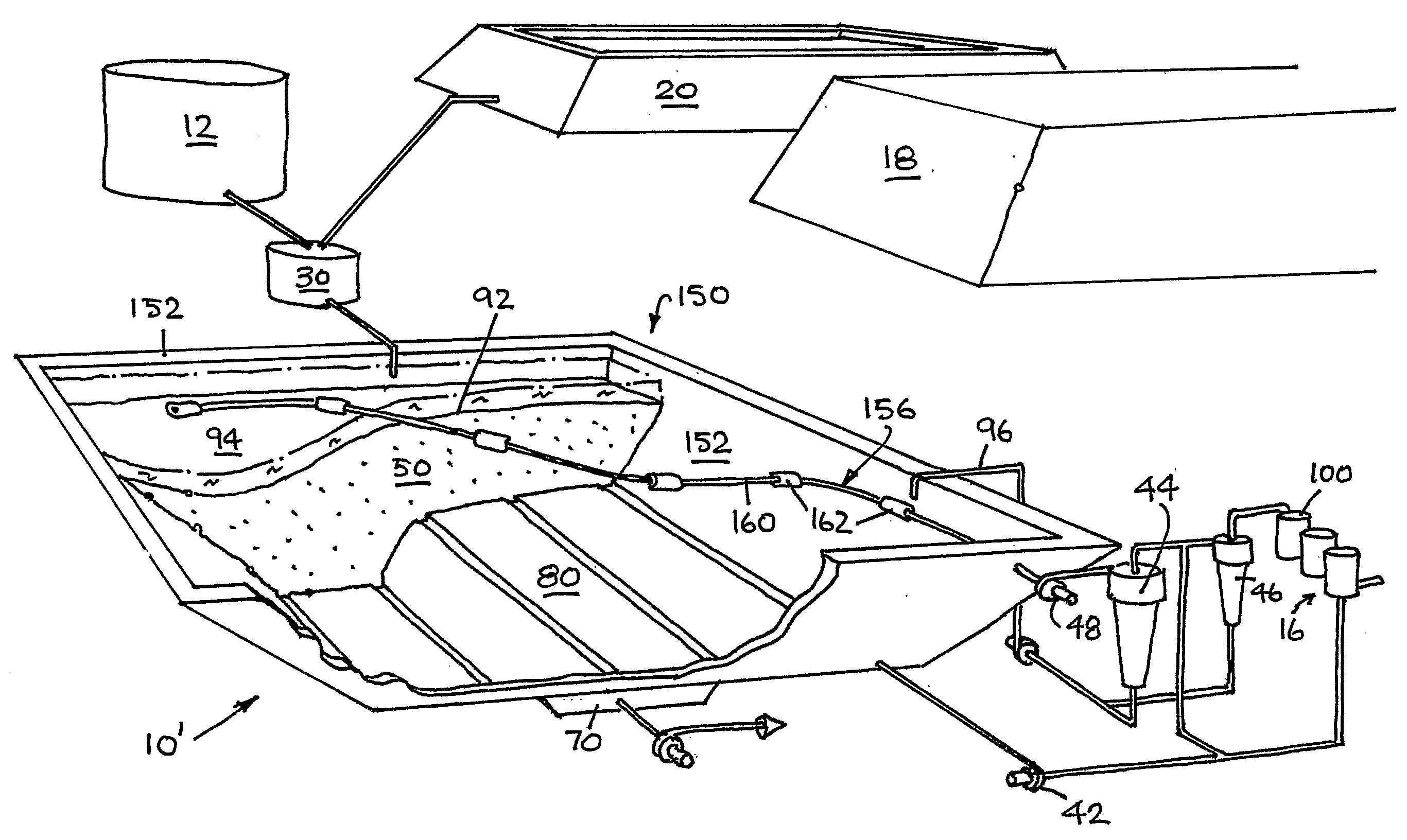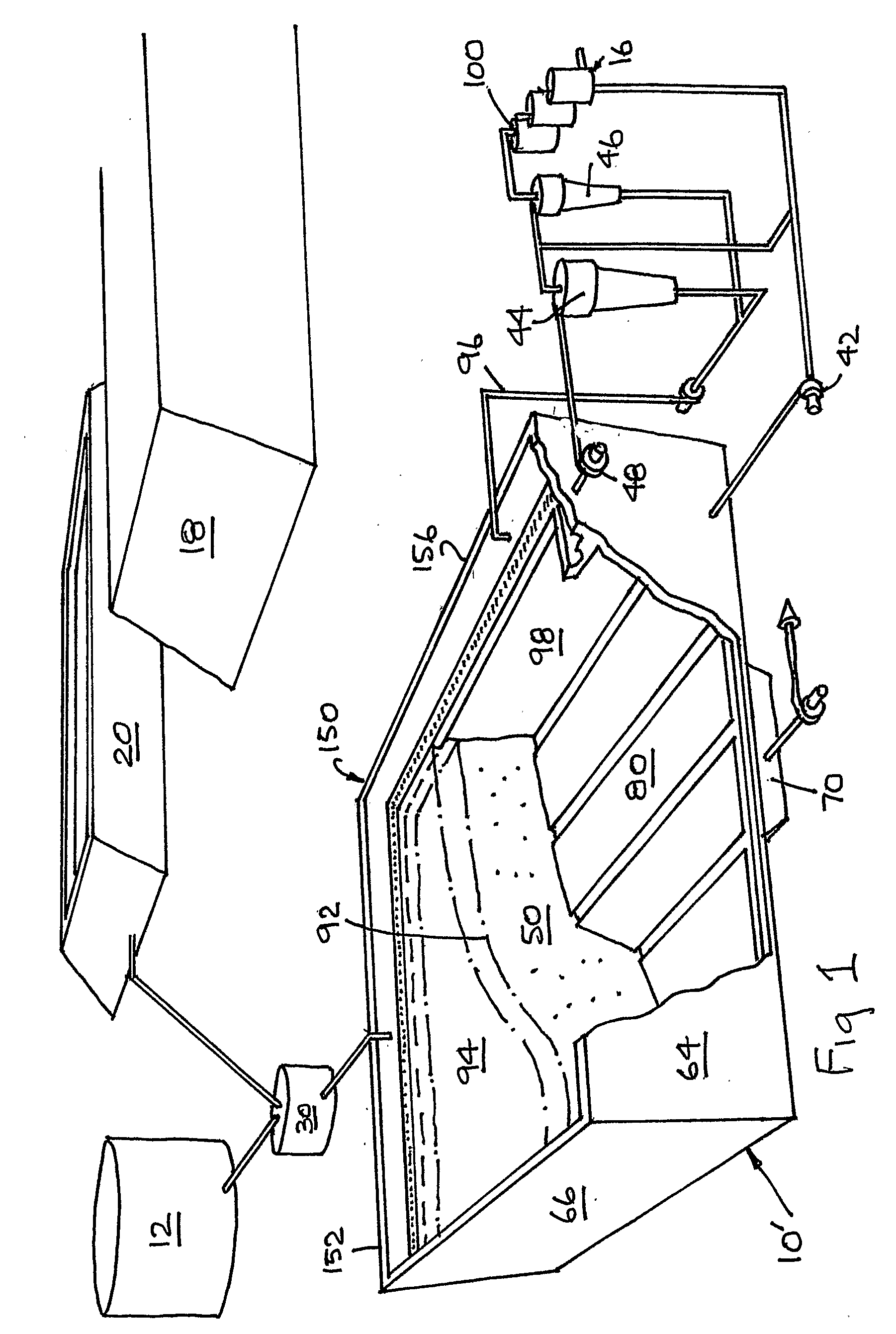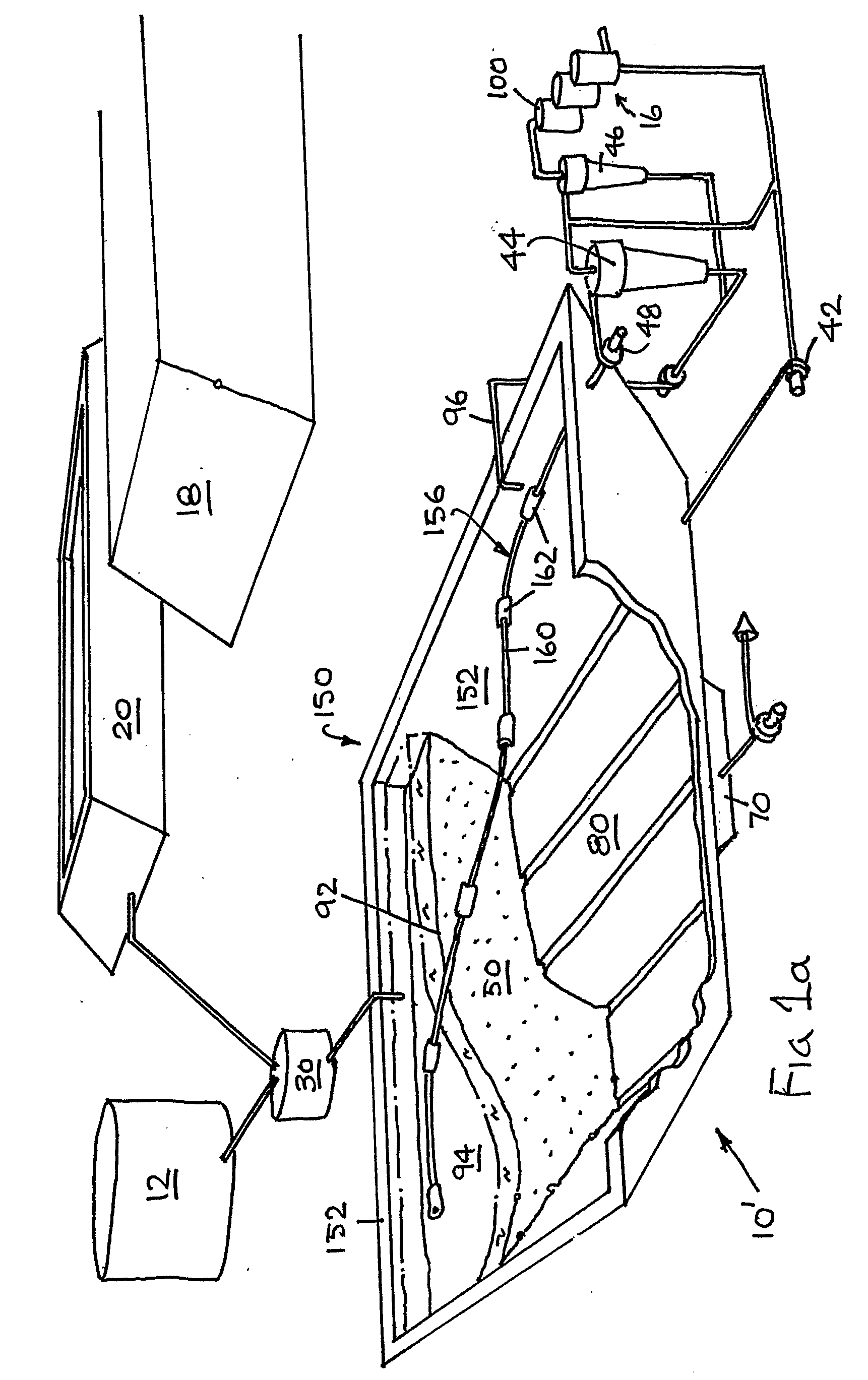Mineral extraction system and process
a technology of mineral extraction and extraction system, applied in the field of minerals extraction, can solve the problems of inefficient use of liquid solvent, unprocessed ore, high operating cost, and low yield, and achieve the effect of low capital cost and cost effectiv
- Summary
- Abstract
- Description
- Claims
- Application Information
AI Technical Summary
Benefits of technology
Problems solved by technology
Method used
Image
Examples
Embodiment Construction
[0045]In FIGS. 1 and 2 there is shown an exemplary embodiment of the Trench Leaching System 10 in accordance with the present invention. The Trench Leaching System 10 includes a crushing circuit 12, a leaching circuit 14, a stripping circuit 16, a waste circuit 18 and a water reservoir 20.
[0046]The crushing circuit 12 is typically of conventional form and is designed to provide ore outputs with particle sizes of 12 has a pulp density control system 30 for delivering the crushed ore in a slurry form to the leaching circuit 14.
[0047]It is also envisaged that in reprocessing of tailings dumps, no crushing circuit will be required.
[0048]It is also envisaged that the ore could be introduced to the leaching circuit in a dry form.
[0049]The leaching circuit 14 includes a processing tank 40, a sparging pump 42, a main wet cyclone 44, a secondary bleeder cyclone 46 and a slurry pump 48.
[0050]The output of the pulp density control system 30 is plumbed into the upper reaches of the processing t...
PUM
| Property | Measurement | Unit |
|---|---|---|
| angle | aaaaa | aaaaa |
| time | aaaaa | aaaaa |
| particle size | aaaaa | aaaaa |
Abstract
Description
Claims
Application Information
 Login to View More
Login to View More - R&D
- Intellectual Property
- Life Sciences
- Materials
- Tech Scout
- Unparalleled Data Quality
- Higher Quality Content
- 60% Fewer Hallucinations
Browse by: Latest US Patents, China's latest patents, Technical Efficacy Thesaurus, Application Domain, Technology Topic, Popular Technical Reports.
© 2025 PatSnap. All rights reserved.Legal|Privacy policy|Modern Slavery Act Transparency Statement|Sitemap|About US| Contact US: help@patsnap.com



